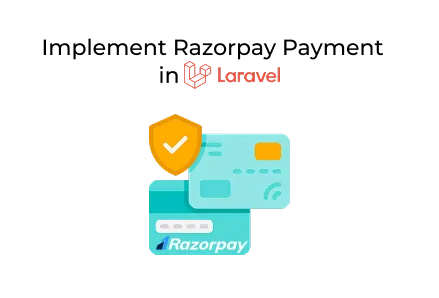Home - Scripts - Website Development

Integrating Razorpay with Laravel ensures secure payments, seamless checkout, easy setup, real-time verification, and smooth transactions for businesses, developers, and modern web applications.
Key Points
Seamless payment integration is vital for custom website and web app development. Without a secure and smooth payment gateway, businesses risk losing customers at checkout. That’s why many developers opt for Razorpay, a trusted platform that supports payments via UPI, credit/debit cards, wallets, and net banking.
Integrating Razorpay into your Laravel backend gives users a smooth, secure, and easy transaction experience. Whether you're creating an eCommerce platform, SaaS solution, or subscription service, Razorpay provides the right APIs and SDKs to make integration simple.
This step-by-step guide will walk you through how to implement Razorpay payment in Laravel, ensuring you can create a full-stack payment solution that improves user experience and business efficiency.
Before diving into the Laravel code, let’s look at why Razorpay is preferred for custom web app development projects:
By choosing Razorpay, you simplify the payment process and enhance customer trust, which is key in custom website development and SaaS solutions.
Switch to Live Keys when you deploy your Laravel application.
Run the following command:
This installs Razorpay’s official PHP SDK.
In your Laravel .env:
Run:
Edit app/Http/Controllers/PaymentController.php:
In routes/web.php (or api.php if using APIs):
In resources/views/payment.blade.php:
For production, you should set up webhooks so payments, failures, or refunds are automatically updated in your system.
In routes/web.php:
In PaymentController.php:
Integrating Razorpay with Laravel is essential for modern web and custom website development projects. It enables businesses to handle transactions securely while offering users a seamless payment experience.
If you’re building an eCommerce platform, subscription service, or SaaS product, Razorpay simplifies the process with its APIs and SDKs. Developers can easily implement order creation, secure payment verification, and webhook automation for real-time transaction updates.
For businesses aiming to speed up their digital transformation, it’s advised to hire Laravel developer experts who can not only implement Razorpay but also develop scalable, secure, and high-performance applications.
By following this guide, you now have a complete roadmap to implement Razorpay in Laravel and React successfully.

©2025Digittrix Infotech Private Limited , All rights reserved.